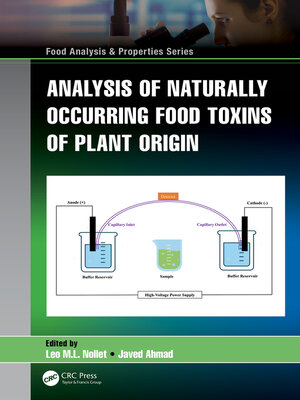Analysis of Naturally Occurring Food Toxins of Plant Origin
ebook ∣ Food Analysis & Properties
By Leo M.L. Nollet

Sign up to save your library
With an OverDrive account, you can save your favorite libraries for at-a-glance information about availability. Find out more about OverDrive accounts.
Find this title in Libby, the library reading app by OverDrive.



Search for a digital library with this title
Title found at these libraries:
| Library Name | Distance |
|---|---|
| Loading... |
Natural toxins are toxic compounds that are naturally produced by living organisms. These toxins are not harmful to the organisms themselves, but they may be toxic to other creatures, including humans, when eaten. These chemical compounds have diverse structures and differ in biological function and toxicity. Some toxins are produced by plants as a natural defense mechanism against predators, insects, or microorganisms, or as a consequence of infestation with microorganisms, such as mold, in response to climate stress (such as drought or extreme humidity). Well-known groups of natural toxins of plant origin are: cyanogenic glycosides, pyrrolizidine alkaloids, furocoumarins, lectins, and glycoalkaloids. These plant-origin natural toxins can cause a variety of adverse health effects and pose a serious health threat to both humans and livestock.
Analysis of Naturally Occurring Food Toxins of Plant Origin is divided into three sections that provide a detailed overview of different classes of food toxins that are naturally found in plants, including various analytical techniques used for their structural characterization, identification, detection, and quantification. This book provides in-depth information and comprehensive discussion over quantitative and qualitative analysis of natural toxins in plant-based foods.
Key Features:
Also available in the Food Analysis and Properties Series:
Nutriomics: Well-being through Nutrition, edited by Devarajan Thangadurai,Saher Islam,Leo M.L. Nollet, Juliana Bunmi Adetunji (ISBN: 9780367695415)
Bioactive Peptides from Food: Sources, Analysis, and Functions, edited by Leo M.L. Nollet and Semih Ötleş (ISBN: 9780367608538)
Mass Spectrometry in Food Analysis, edited by Leo M.L. Nollet and Robert Winkler (ISBN: 9780367548797)
For a complete list of books in this series, please visit our website at:
www.crcpress.com/Food-Analysis—Properties/book-series/CRCFOODANPRO







